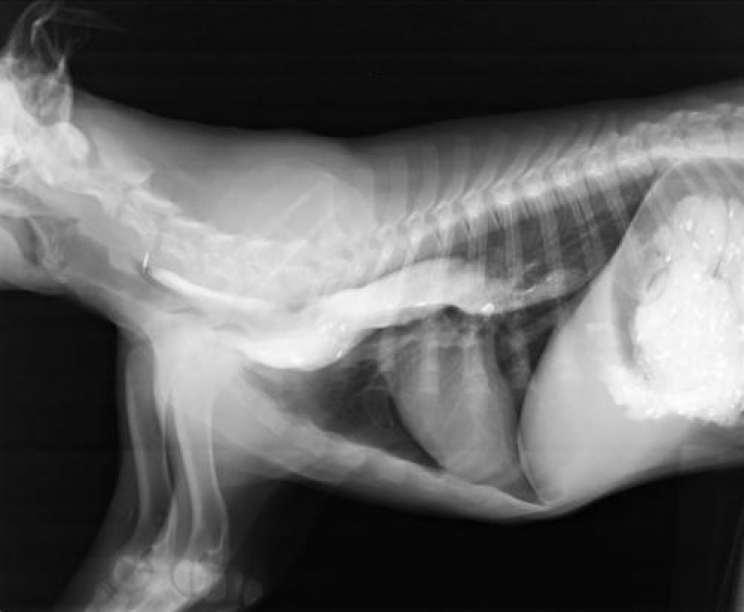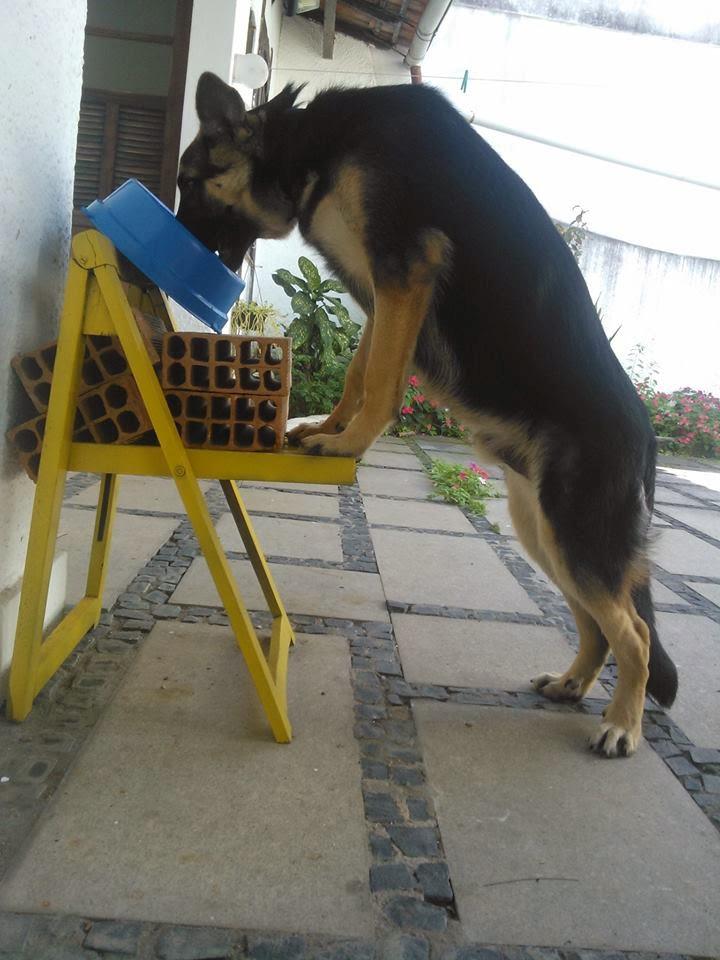In this article, we will be talking about the mega esophagus disease, which generally affects dogs of different ages. It can appear immediately at birth but also after many years. In some cases, it is only seen after some time, when its consequences may have become serious.
It is therefore very important to know how to recognize the symptoms as soon as possible, so that you can consult a veterinarian and start the therapy.
What is it?
The esophagus, which dogs have exactly like us, is the tube that starts from the pharynx (the "throat") and reaches the stomach. Its function is to make the ingested food flow from the mouth to the stomach, where it will be digested before passing through the intestine.
The esophagus is a very narrow tube, when empty (i.e. when food does not pass) it has a diameter of about 1 cm in a dog. It is mainly made up of muscles, which carry food "down the tube", preventing it from staying inside. If this mechanism doesn't work we come across the mega esophagus.
The causes can be varied.
The presence of the right aortic arch is a situation in which a blood vessel is straddling the esophagus, (the blood vessel is useful in foetal life (the foetus does not eat)) and does not atrophy, it becomes a ligament and then breaks, as it would happen to normal things. There remains a blood vessel with a lot of blood inside, and it "chokes" the esophagus preventing the passage of food: thus the part that is located above the "choking" expands abnormally and the food stagnates in this cavity and putrefies, which is very dangerous.
This case occurs in about 10% of cases and affects foetal blood vessel which affects puppies. We realize this when they stop drinking milk (which is able to pass as it is liquid) and start eating solid foods.
Acquired idiopathic mega esophagus, is a very similar situation that generally affects adult dogs, (large dogs are mostly affected). It constitutes 75% of the cases of mega esophagus.
"Idiopathic" means "the cause of which is unknown": Practically, without any explanation, at a certain age, there are defects in the innervation of the esophagus, which no longer responds to brain control. As a result, the muscles of the esophagus that push food towards the stomach do not work, and the food does not stimulate the opening of the cardia (the "mouth of the stomach") and remains in the esophagus. Here it accumulates and begins to rot as it did in the other case.
The third case is where there is a nervous pathology (such as distemper) or other types of diseases that damage the muscles, which lead to defects in the functioning of the esophagus, resulting in a mega esophagus. The resolution is to treat the causing disease, obviously, if it is possible to cure it.
The mega esophagus is dangerous not only because the animal remains undernourished since the food does not pass, but also because in some cases the food that "stagnates" could return to the mouth and end up in the lungs, where it can lead to death in very few days because of the big infection it creates.
Symptoms of the mega esophagus
The most common symptom is regurgitation, which can occur immediately after a meal or after a few hours.
It is important to distinguish between vomiting and regurgitation: vomiting, is the expulsion of digested material from the mouth, it is preceded by retching and is generally a "loose" or liquid substance. The regurgitation is instead undigested material, which is practically "spit" and, saliva aside, is very similar to the food that was put in the dog's bowl. If they were small meat pieces, we will still see them and recognize them.
Episodes of this kind (that repeat themselves over the days) lead the dog to lose weight (because, in fact, he has not eaten for several days). If this happens, it is highly recommended to be aware of the alarm bell and immediately take your pet to the vet.
Then the diagnosis is simple, the dog ingests an "opaque meal", which can be seen on the X-rays after a few minutes: if the opaque food is still in the esophagus and the diagnosis does not proceed, it is probably the mega esophagus.
Treatment and prognosis
Treatment is primarily surgical, although it may not be needed when the cause of the mega esophagus is another separate disease, which leads to this problem (mega esophagus). The vet will do extensive analysis and understand the best way to solve the problem, either with medications or with surgery.
If the problem is the presence of the aortic arch, surgery is necessary because it must be removed. The puppy might die if the heart problems deriving from the additional vessel are too serious or he can recover completely if there are no consequences, since the esophagus will be back to normal.
In the adult dog, the mouth of the stomach is usually anchored to the main respiratory muscle, the diaphragm: in this way, with each breath the stomach will open and the food will end up in it.
Some precautions will be necessary, such as providing food which is not on the ground (with the esophagus vertically the force of gravity helps the food to go down). With a little patience, although the disease cannot completely heal, our friend he can have a long life for many years to come.











